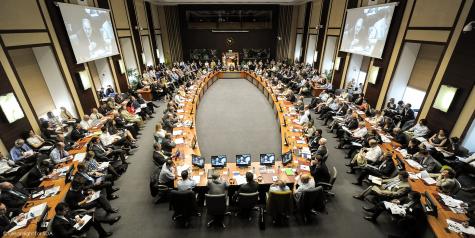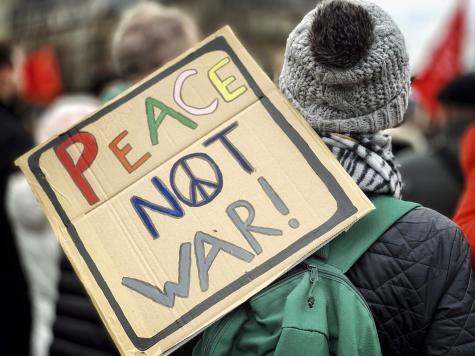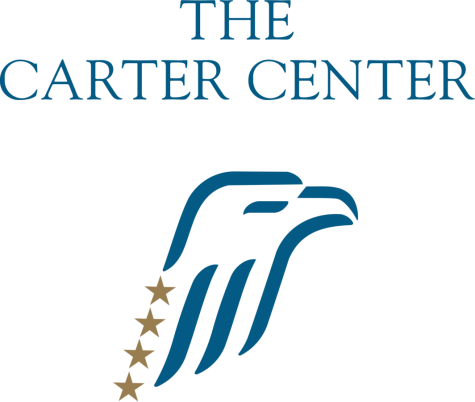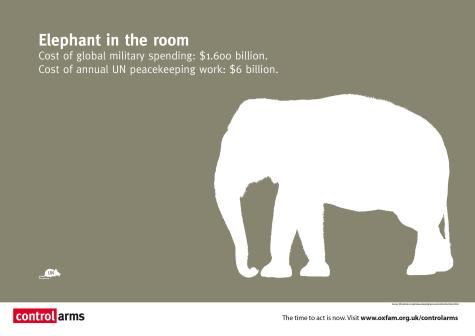Silent Diplomacy

➡️ SILENT DIPLOMACY - A Powerful, People-Driven Approach to Conflict Resolution
Silent diplomacy offers a powerful alternative response in a world increasingly dominated by conflict, corruption, militarisation and political stagnation.
Proposed by philosopher and artist Andreu Ginestet, this resource highlights a lesser-known but vital form of diplomacy - one that is quiet, creative, civil-society-driven, and committed to ending violence, not managing it.
"Peace is more than a goal. It's a way of living, thinking, and acting." - Werner Wintersteiner
Jump straight to our resources on ➡️ Silent Diplomacy
Explore our comprehensive guides on -
-
Conflict Regions, the Military and Nuclear Disarmament

What Is Silent Diplomacy?
Silent diplomacy refers to non-governmental, informal peace efforts led by individuals who are not state diplomats. These actors may include artists, barristers, lawyers, scholars, professors, experts, religious figures, businesspeople, educators, and former officials. State actors might include former diplomats, former ministers, former presidents, and special envoys.
They mediate conflicts, defuse tensions, and create pathways to peace. They are often called into action when official diplomacy fails or is blocked by political interests. Unlike traditional diplomats who serve governments, silent diplomats serve humanity.
This type of diplomacy is:
-
Quiet – It avoids media attention, allowing trust to grow
-
Creative – Each situation is approached uniquely
-
Ethical – It puts people and peace above politics
-
Flexible – It works across all levels, from grassroots to global
The world needs peace more than ever. However, traditional diplomacy is often stuck in political games, economic interests, and outdated thinking. Silent diplomacy operates behind the scenes, but its impact can be historic.
Examples of silent diplomats include Jimmy Carter, who used quiet diplomacy to defend human rights around the world, Llewellyn Thompson, whose calm advice helped prevent nuclear war during the Cuban Missile Crisis, and Jeffrey Mapendere, who explained how Track 1.5 diplomacy (see below) can bridge the gap between officials and civil society.
The Carter Center proves that peace can be built without armies, weapons stockpiles or military threats. The NGO, founded by Jimmy and Rosalynn Carter, works in over 80 countries, preventing and resolving conflicts, enhancing freedom and democracy, and equipping citizens with the skills, knowledge, and resources they need to thrive.

A New Narrative - Challenging the System of Violence
Silent diplomacy also means changing the traditional narrative -
That power comes from weapons.
That war is inevitable.
That violence is part of who we are.
None of that is true. We believe it is time for a new story – one where peace isn't just possible but practical, powerful, and systematic. We need a new norm of peace-first solutions, a transformation of the systems that create conflict in the first place, and a cultural shift from domination to cooperation.
Instead of reacting to violence, silent diplomacy asks – How can we prevent it from happening at all?
Ginestet observes how our current systems are driven by military-industrial interests, manipulative media, and elite dominance that normalise violence and suppress cooperation. Silent diplomacy confronts this directly, offering a new framework where violence is understood as a system, not just an event, and where peace is an ongoing process of empowerment, not mere absence of war.
The true enemy of humanity is not a country or ideology but a global system of violence maintained through control, fear, and profit. This system thrives by destabilising regions, manipulating crises, and selling both destruction and "solutions" to the same people.
Silent Diplomats in Action
Silent diplomats - state actors or peace actors - operate across four "tracks" of diplomacy:
-
Track 1: Official state diplomacy
-
Track 1.5: Collaboration between official and silent actors
-
Track 2: Citizen-to-citizen diplomacy in informal settings
-
Track 3: Grassroots peacebuilding within local communities
-
Track 4 (newly proposed): Systems-level thinking and the design of peaceful societal architectures offering a visionary, preventive approach rooted in complexity science and ethics

Why We Need Silent Diplomacy Now
With wars raging in Ukraine, Israel-Palestine, and countless overlooked regions such as Sudan, Yemen, and the Democratic Republic of Congo, we can no longer wait for top-down solutions. Institutions like the United Nations, though well-intentioned, are constrained by their own structures and politics.
Silent diplomacy steps into this gap, embodying hope, ethics, and innovation where institutional approaches fail. Ginestet's approach challenges us not only to oppose war but to create cultures that prevent it and transform the systems that enable violence in the first place.
Where We Go From Here - Innovative Future Developments
The Global Alliance for Ministries and Infrastructures for Peace (GAMIP) is a worldwide community of civil society campaigns, organisations, committed citizens, elected and appointed government officials from over 80 countries which are commited to lasting peace and addressing critical needs. They are an exellent example of how we can foster a culture of peace and demonstrating peace in action.
The following texts chart a course forward and address major issues in peace negotiations in our current geopolitical climate:
- Pareto for Peace - A potential exit-strategy for humankind from violent downfall.
- Trauma Mapping - Research on the diagnose of the true toll of trauma on groups of people that have been subjected to unusual conditions such forced migration.
- Complexity Governance - Radical change to the narrative of international policy which facilitates the understanding, analysis and addressing of natural and human-made crises.
Silent Diplomacy for a Better World
This guide to silent diplomacy provides both a manifesto and a manual for peace in the 21st century.
We must reclaim the power of civil society to imagine and enact a future free from systemic violence. Silent diplomacy isn't reserved for elites or politicians but can be embraced by empowered individuals who become architects of peace. It grows from civil society - from you, your neighbourhood, your creative ideas, your will to help others.
Diplomacy doesn't need guns, false flags, or fanfare - it just needs courage, wisdom and compassion.
Peace isn't a job for someone else. It starts with all of us.
Silent diplomacy - Quiet voices, loud impact.
Author: Andreu Ginestet, edited by Rachael Mellor, 29.04.25, Update: 12.05.25, licensed under CC BY-SA 4.0
For further reading on Silent Diplomacy see below ⬇️
- Diplomacy - Silent diplomacy (recommended)466797
- Track II diplomacy - Wikipedia321933
- Diplomacy (disambiguation) - Wikipedia308498
- Pareto for Peace transcription - Andreu Ginestet466560
- Carter Center466761
- Twitter - #SilentDiplomacy308499
- YouTube - Silent Diplomacy308500
- VIDEOS - Pareto for Peace ! - by and with Andreu Ginestet468535
- Legal Definitions - quiet diplomacy - LSD 477094
- Quiet Diplomacy in Action: The OSCE High Commissioner on National Minorities (pdf) - OSCE 477099
- Video: The West Destroyed Its Own Diplomacy | Ambs. Zorilla, Ruch & Kusai - Neutrality Studies 06.09.25488749
- The Power of Quiet Diplomacy: Achieving Impact Behind Closed Doors - SRC 10.04.25466802
- What Is Silent Diplomacy? - Tactical Warfare Experts 08.05.25477096
- Video: How Does Quiet Diplomacy Differ from Traditional Diplomacy? - International Policy Zone 2/25466629
- Jimmy Carter exemplified the role of president as diplomat - Missouri Independent 31.12.24466768
- Jimmy Carter, a transformative diplomat despite Iran - France24 29.12.24466770
- Quiet diplomacy in the resolution of today's conflicts - Atalayar 20.12.24466801
- Breaking out of the logic of war Is there a peace perspective for the Russian-Ukrainian war - Academia, 2024466784
- Peter Paul Rubens: spy and ambassador just for the love of art - The Diplomat 14.08.23466763
- Myanmar crisis highlights limits of Indonesia’s ‘quiet diplomacy’ as it sets sights on becoming a ‘great regional power’ - Conversation 03.08.23466807
- Former U.S. Official Shares Details of Secret ‘Track 1.5’ Diplomacy With Moscow - Moscow Times 26.07.23466790
- Andreu Ginestet -Silent Diplomat Silent Diplomacy Part 1 Principles, fields of work and modes of action of silent diplomats. A report from everyday practice - Research Gate 0…466776
- Video: What do a quiet diplomat and a peace researcher have to say about the current situation - OstsachsenTV 09.04.23466778
- Video: The week that changed the world and what we can learn from it to avoid a war between the US & China 1/23466632
- Track II Diplomacy: How Can It Be More Effective? - ME Council 09/22466793
- Video: Peace ministries instead of military alliances - Andreu Ginestet - Naiset Rauhan Puolesta 11.07.22466777
- Multi-Track Diplomacy Explained - NTI 19.04.22466788
- Ten points on Ukraine from a peace policy perspective - Global Campaign for Peace Education 04.03.22466780
- Track One and a Half Diplomacy Mapendere - Studocu, 2022466775
- Toward a Normative Turn in Track Two Diplomacy? A Review of the Literature - MIT 22.12.21466796
- Semi-Formal Diplomacy: Track 1.5 and Track 2 - Oxford Academic 08.12.21466791
- Quiet Conversations: Observations from a decade of practice in cyber-related track 1.5 and track 2 diplomacy - EU Cyber Direct 15.11.21466792
- How Wars End - Foreign Policy 5/21 308503
- The Future of Mediation in the Post-COVID World - GCSP 9/20308502
- Video: Werner Wintersteiner: Peace Educator - Global Campaign for Peace Education 01.08.20466779
- The Virtues of Quiet Diplomacy - Oxford Academic 06/20466811
- Video: Global Citizenship Education – Prof. Dr. Werner Wintersteiner - Campus für Demokratie 01.04.20 466783
- Patrons and painters: Rubens the diplomat - The Electric Light Company 23.03.20466758
- Beyond the Tracks? Reflections on Multitrack Approaches to Peace Processes - HD Centre 01/20466795
- Conflict resolution relies increasingly on diplomatic back channels - Economist 1/20308501
- What is a track 1.5 Diplomat? - Diplomat Magazine 8/19480000
- Cold War Adviser: Llewellyn Thompson and the Making of U.S. Policy toward the Soviet Union - MIT 01.08.19466771
- What is a track 1.5 Diplomacy from the Experience of a Track 1.5 private diplomatic contractor Diplomat? - Research Gate 05/19466794
- Diplomacy rethought - USC Public Diplomacy 19.11.18466773
- Moderation as courage: the legacy of Stanley Hoffmann as a Scholar and Public Intellectual - University of Bristol, 2018466786
- Waging Peace Through Symphonic Discourse in the Sudan–Uganda Conflicts - Sage 25.12.17466774
- The art of quiet diplomacy - IR Impact 21.12.17466810
- Video: Amiram Levin: 'quiet' diplomacy can prevent war - i24News English 11/17466628
- Stanley Hoffmann, Who Brought Passion to Foreign Policy Analysis, Dies at 86 - NY Times 14.09.15466785
- Oman's Quiet Diplomacy By Jeremy Jones - NUPI 11.02.14466812
- Diplomacy by non-diplomats - GPPAC 03.10.13466799
- Building a global community for a culture of peace: The Hague appeal for peace global campaign for peace education (1999-2006) - Research Gate 08/13466782
- A Quiet Diplomat for Challenging Times - UN 30.12.11466809
- OSCE, in the name of peace in Europe: Silent diplomacy (misleading) - Le Monde 11/10308504
- Silent diplomacy - Le Monde 11/10466800
- Lady Ashton: mistaking quiet diplomacy for silence - Guardian 19.07.10466804
- A Quiet Diplomacy on the Mideast Peace Path - Brookings 02.07.10466806
- Book: Master of Shadows: The Secret Diplomatic Career of the Painter - Mark Lamster, 2009466764
- Art: Painter Diplomat - Time 09.04.56466765
- Rubens' Diplomatic Career and Its Influence on His Art - Fiveable 466766
- Jimmy Carter: Diplomats Remember - AFSA466769
- Track One and a Half Diplomacy and the Complementarity of Tracks - COPOJ466772
- Barrington Roy Schiller - a lifetime of multitasking Cross Border, trans-cultural business development and Diplomacy - The Barrington Group466787
- Quiet diplomacy could ease South China Sea tensions - Civils Daily466808
- Quiet Diplomacy in Action: The OSCE High Commissioner on National Minorities - OSCE 466805
- Options and Techniques for Quiet Diplomacy - Conflict Prevention Handbook Series 466803
- Track 1.5 Diplomacy - Institute for Regional Security 466789
- Jimmy Carter - Wikipedia466767
- Peter Paul Rubens - Wikipedia466627
- Henry Kissinger - Wikipedia466638
- Stanley Hoffmann - Wikipedia466760
- Werner Wintersteiner - Wikipedia466781
- Llewellyn Thompson - Wikipedia466759
- Peter Paul Rubens - Wikipedia466762
- Trust (social science) - Wikipedia466639
- (Mutual) Respect - Wikipedia466640
- Mediation - Wikipedia466631
- Arbitration - Wikipedia466630